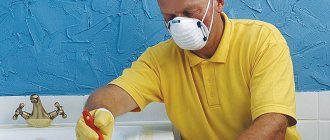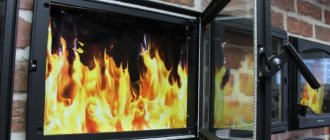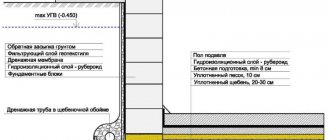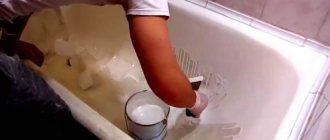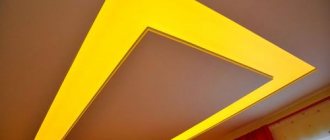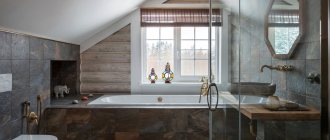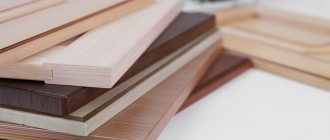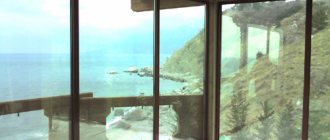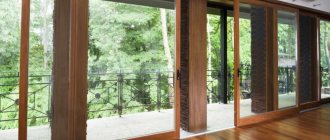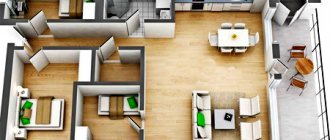DIY liquid glass products.
Vases, plates, chandeliers, mobiles, as if made from pieces of the rainbow; watches sparkling in the rays of electricity; panels that come to life from the playful sunlight; aroma lamps with a heart-light flickering in mysterious incredible colors on the walls; stained glass windows, decorations that no one else has and from which it is difficult to take your eyes off... And now you can proudly say: “These are my products from liquid glass, made with my own hands!” And now you don’t have to master the difficult and generally harmful profession of glassblowing in order to make unique, fragile, fascinating decorations for your home, for yourself, as a gift for loved ones and friends, New Year’s decorations for the Christmas tree, etc. The passion for crafts made from liquid glass is gaining momentum and attracts more and more creative people with a subtle sense of style and beauty.
Properties and features of liquid glass
This is a kind of water mixture of sodium and potassium. This component is used in installation, repair and construction work. This product is simply ideal for waterproofing walls, floors, foundations, and basements.
Working with the base
One of the features of such glass is its antiseptic effect. The composition also includes solutions of potassium and sodium with the addition of cement powder. When this substance comes into contact with a plane, it is in sodium that certain crystals are created, which in turn give it waterproofing abilities.
These crystals fill all the small pores in concrete or plaster, thereby forming a single base. It is able to withstand moisture and aggressive alkaline elements.
Why cover a car with “liquid glass” and not with silicon dioxide?
Initially, “liquid glass” should have been called silicon dioxide, since it is the main component in the composition - 10-25%, and silicon dioxide is also considered the main element that protects the surface from damage and adds shine to the body. Therefore, initially “liquid glass” was supposed to be called silicon dioxide, but marketers came up with a new name to attract more customers, because protecting a car with liquid glass sounds better and more attractive than protecting a car with silicon dioxide.
Preparation of the solution
The procedure for producing such glass involves fusing a mixture of quartz sand with potassium at temperatures from 1300 to 1400 °C. After this, the solution is cooled and liquefied with steam under pressure in an autoclave.
This substance begins to harden upon contact with oxygen. The very essence lies in the fact that the water begins to evaporate, the concentration of free colloidal silica increases. As a result, we obtain its compaction.
In fact, such a substance hardens for a very long time. This is due to the fact that a film forms on its surface, which does not allow air to penetrate inside and allow the entire mass to dry.
Catalysts are used for quick drying. They help the glass harden faster.
Soda glass is the most popular. It is cheaper than potassium, although the latter is more valuable in its properties.
What is the material
Silicate glue or, as it is otherwise called, liquid glass is an aqueous solution of silicate salts. Depending on the main component there are:
- sodium liquid glass, characterized by a high degree of adhesiveness, fire resistance, antiseptic and waterproofing properties;
- potassium, which is immune to atmospheric influences and acid attack.
Soda glass is used to accelerate the hardening process of cement mixtures due to the chemical reaction that occurs.
Liquid glass has become widespread as a construction and finishing material due to its properties:
- Hydrophobic (water-repellent). Thanks to this property, liquid glass is used to treat surfaces exposed to prolonged contact with liquid, including wood products. As a result of impregnation, they will not be subject to swelling and deformation.
- Antiseptic. This property allows the use of silicate glue for protective impregnation of walls against such negative manifestations as mold and mildew.
- Fireproof. Impregnating floors and walls with liquid glass increases the fire safety of the room.
- Antistatic. The material eliminates electrification and does not provoke the occurrence of static electricity.
- Acid-resistant. Impregnation with a silicate solution helps protect the surface from exposure to chemicals.
- Eco-friendly. This material does not emit substances harmful to the human body.
Application
There are three areas in construction in which this type of glass can be used:
Waterproofing process
- As a penetrating sealant for cement treated surfaces. What is the point of this use? Several layers are applied to a specific plane. The concrete begins to absorb it, and when it dries, its pores will be clogged. Therefore, moisture cannot penetrate into this base. The use of this building material as independent waterproofing is not particularly effective. It is necessary that the base be covered with additional insulation.
- As an additive in the preparation of cement mixtures. Solutions prepared in this way have the quality of quick drying. But this to some extent narrows the range of applications of such solutions. They are mainly used for plastering the surface of swimming pools and insulating various fixed joints. The prepared mixture must be used quickly; after a very short time, it becomes hard and can no longer be used.
- As a modifier in the production of different types of concrete. Having made the coating with such concrete, it will dry very well and become like a monolith, which has high waterproofing qualities. It is necessary to prepare a solution from such concrete very carefully. If you do not adhere to the required proportions, you will end up with a fragile surface. Such mixtures cool very quickly, so they need to be prepared directly on the spot where they will be immediately used in work.
Wall decoration with glass panels
Glass panels can easily replace tiles in the bathroom
In addition to glass wallpaper, there are also so-called. glass panels. These are decorative glass panels that are usually used to decorate kitchens and bathrooms.
In general, glass panels on the walls are an original decorative element. Thanks to them, the space visually expands, the room becomes brighter and more festive.
How is the waterproofing procedure performed?
Waterproofing with liquid glass requires some preparatory work with the surface to be coated. If dust or dirt comes across during application, the quality of the work will be spoiled and nothing will be able to be glued. Therefore, this stage must not be missed and taken responsibly.
Waterproofing technology consists of the following stages:
- Take a roller or brush and apply the first layer to the surface. This stage is very simple and does not require unnecessary details.
- After 30 minutes, it is necessary to repeat the first stage: the next layer is applied to the insulated concrete base. It is important to apply the flowing glass evenly, without making any breaks.
- After this, we prepare the protective layer. First, we make a regular mortar from cement, which is usually used for plastering walls. Once the mixture is prepared, pour flowing glass into it, maintaining a 1:1 ratio. Everything is mixed very well and the required base is covered. It makes no sense to re-dilute such a solution; in this case, the substances lose their necessary properties. Because of this, it is recommended to prepare the mixture in small portions. This procedure is usually carried out with a construction spatula and applied in a thin layer.
- The last stage of insulation will be insulation. Polystyrene foam or basalt wool are suitable for this. We choose what suits best.
Foam varnish for painting concrete floors
Due to numerous requests in the comments to my videos, today I will try to make a composition of polystyrene foam and solvents for application to concrete. I would like to see how it will behave, because car owners are interested in cheap varnish to cover the garage against dampness. I’ll start by dissolving polystyrene foam in gasoline. I should also check it in acetone and solvent, but I think that acetone dries too quickly. I pour 92 gasoline into a clean, empty metal can. You will need a little more than half the can of gasoline. I cut a piece of polystyrene foam approximately 1500 mm long and 40 mm thick into strips and lower them one by one into a jar of gasoline. The width of the strip should be chosen according to the size of the can. My goal is to see how the resulting composition will behave on concrete (I don’t need a lot of varnish). The polystyrene foam easily enters the can, melts and compresses into a fairly dense lump at the bottom. Note: in this case, gasoline will bubble and splash out of the can. The resulting composition has the appearance of a gel and is similar to napalm (when ignited, it immediately flares up, burns for a long time, the flame is high). It is not possible to regulate the viscosity of the composition by adding gasoline - it reaches a certain thickness and the process stops there. I leave the jar for a while so that the air bubbles come out and all the pieces of foam dissolve.
Covering the concrete floor
I take out the gel-like mass from the bottom of the jar and transfer it to another container. I clean the area of the concrete slab with a wire brush and blow off dust with a spray gun. I prepared a brush and a spatula for work, which I lightly greased with oil. This way the varnish will not stick. It turned out to be more convenient to work with a spatula. I pour the varnish onto the concrete and with a spatula I begin to apply it to the surface with movements in different directions. After finishing the job, there is practically nothing left on the spatula. When applying the varnish you immediately smell the smell of gasoline. I leave this area for about an hour to dry.
Dissolving polystyrene foam in xylene
I will conduct the second experiment with xylene (one liter costs 110 rubles).
If you cover the entire garage with this composition, then its cost will be 2.5 times more expensive than polystyrene foam varnish dissolved in gasoline. To dissolve in xylene, I chose denser and more expensive fine-grained foam, from which the protection of the computer system unit is made. When xylene is added to the jar, the foam dissolves almost completely, the viscosity of the composition becomes less, and the thick lump disappears. A composition of this viscosity can be applied in a much thinner layer. It looks like xylene is better for making foam varnish. Note: I was also advised to use solvent 647, but I didn’t have it on hand.
I'll try using xylene as a wood varnish. I take a walnut branch peeled from the bark and apply a thin layer of the composition with a brush. It turns out very well, but you need to wait for the varnish to dry. I also apply a layer of the composition onto the concrete with a brush. The layer turns out to be very thin and there are no air bubbles in it. I leave it to dry. The first section did not dry completely in an hour - a film with a very large number of bubbles formed on the surface. Huge bubbles formed on the sides. To the touch it looks like the well-known packaging film with bubbles. However, as an option, this composition can be used after complete drying. The area coated with xylene varnish turned out better. The composition is well absorbed into the surface of the concrete and looks like real varnish. The only negative is the high cost of xylene compared to gasoline. To reduce the cost, you can first dissolve the foam in gasoline, and only then add xylene and achieve the desired viscosity. It will be inexpensive to prepare a composition based on bottled xylene, which is sold in cans and costs less.
Note: the composition dried on wood in 10 minutes and is indistinguishable from real varnish. In the future, for an experiment, I can take a board polished on a machine from a nearby furniture workshop and apply 3-4 layers of xylene varnish to it.
Watch the video
sdelaysam-svoimirukami.ru
Pros and cons of using liquid glass in insulation
Liquid glass
The advantages of this building substance include:
- Fairly high turnover. Due to the fact that the product is very fluid, it can penetrate into any crevice. This ensures reliable protection. Such glass can equally penetrate both the structure of wood and concrete surfaces. At the same time, it does not lose its properties.
- Creation of a seamless and waterproof film. This is not affected in any way by the method of application. Such a film will be continuous, even if the layers were applied with a large break in time.
- Minimum consumption. This ability remains the same across a variety of applications. Be it added to cement mortar or other mixture used for insulation.
- Affordable price. This quality is paramount when choosing any product. Such glass acts as a good waterproofing substance at its low price and is thus ahead of even modern building materials.
The disadvantages of liquid glass include the following:
- The scope of application is very limited. This component is used only for waterproofing surfaces with concrete or plastered surfaces. For example, there is no point in applying it to a brick wall, it destroys it.
Frozen glass in liquid form
- It cannot be used independently. It can only be used in conjunction with other waterproofing materials. The reason is that the surface itself, which will be obtained when liquid glass hardens without additives, will be fragile.
- The application technology is quite complex. The master must know all the intricacies of using liquid glass - it dries quickly, the finished solution must be worked very quickly and prepared in small quantities. And if we are talking about cement or concrete using liquid glass, then the proportions must be observed.
As you can see, there is nothing wrong with this building material. Its pros and cons are approximately equal. In principle, this kind of glass is an ideal product for waterproofing. The only worrying thing is that in combination with cement, hardening occurs very quickly. But if you learn to do everything correctly and follow all the measures, then you can learn to make friends with this building material. It will help to reliably protect the room from moisture.
What is the material
Silicate glue or, as it is otherwise called, liquid glass is an aqueous solution of silicate salts. Depending on the main component there are:
- sodium liquid glass, characterized by a high degree of adhesiveness, fire resistance, antiseptic and waterproofing properties; potassium glass, which is immune to atmospheric influences and acid attack.
Soda glass is used to accelerate the hardening process of cement mixtures due to the chemical reaction that occurs.
Liquid glass has become widespread as a construction and finishing material due to its properties:
Hydrophobic (water-repellent). Thanks to this property, liquid glass is used to treat surfaces exposed to prolonged contact with liquid, including wood products.
As a result of impregnation, they will not be subject to swelling and deformation. Antiseptic. This property allows the use of silicate glue for protective impregnation of walls against such negative manifestations as mold and mildew. Fireproof. When floors and walls are impregnated with liquid glass, the fire safety of the room increases. Antistatic.
The material eliminates electrification and does not provoke the occurrence of static electricity. Acid-resistant. Impregnation with a silicate solution allows you to protect the surface from the effects of chemicals. Eco-friendly. This material does not emit substances harmful to the human body.
Glass wallpaper for walls - photo
At the end of our review, we invite you to familiarize yourself with the photo gallery.
Today it is fashionable to install glass panels or aprons in the kitchen
If you paint embossed glass wallpaper in some calm color, it will turn out very interesting for the bedroom
Who said that wallpaper has to be painted? Glass wallpaper in the bathroom
To paint glass wallpaper like this, you need to work long and hard
Glass wallpaper with an emblem - and this is possible
Glass panels reflect light, making the room appear larger
It is recommended to paint glass wallpaper with light paint for the first time - to make it easier to paint over later
Glass wallpaper with vertical stripes - for a classic interior
